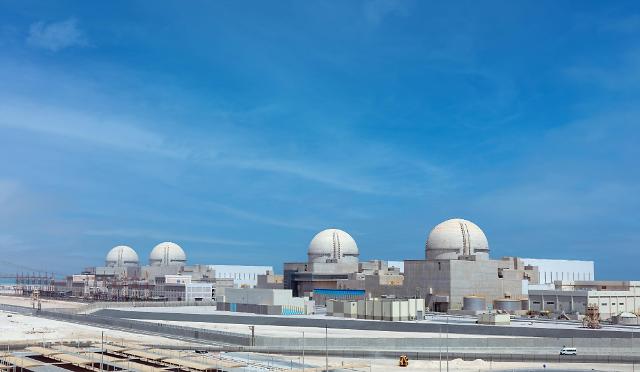
This undated handout photo shows the Barakah nuclear power plant in the United Arab Emirates (UAE). The Korea Electric Power Corp. (KEPCO) said February 26 that the UAE has started the commercial operation of the third reactor of the plant built by South Korea. [Courtesy of KEPCO]
The operation started February 24, eight months after the UAE issued an operating license and completed the process of inserting fuel rods into the reactor in June 2022, according to the state-run unitality company.
The Barakah plant, located 270 kilometers west of Abu Dhabi, has become a symbol of South Korea's first export of its nuclear power station. A KEPCO-led consortium has been building the plant with all four reactors since it won the $20 billion project in 2009.
The first reactor began its commercial operation in April 2021 and the second one in March 2022.
KEPCO said that the company has abided by the international standard and managed to reduce the construction period based on its experience accumulated in the process of building the four reactors simultaneously.
It added that the commercial operation of the No. 3 reactor at the Barakah plan will provide an opportunity for KEPCO-developed APR1400 nuclear reactors to lead the global atomic power market.
KEPCO also said that it is meaningful to start the operation of the new reactor before Dubai will host the 28th United Nations Climate Change conference, also known as COP28, from November 30 to December 12. It plans to expand energy cooperation with the UAE to produce hydrogen and build a super-grid in the Middle Eastern country.
The UAE, on its part, plans to utilize the Barakah plant as a clean energy source as part of its efforts to achieve its net-zero carbon emission goal in 2050.

